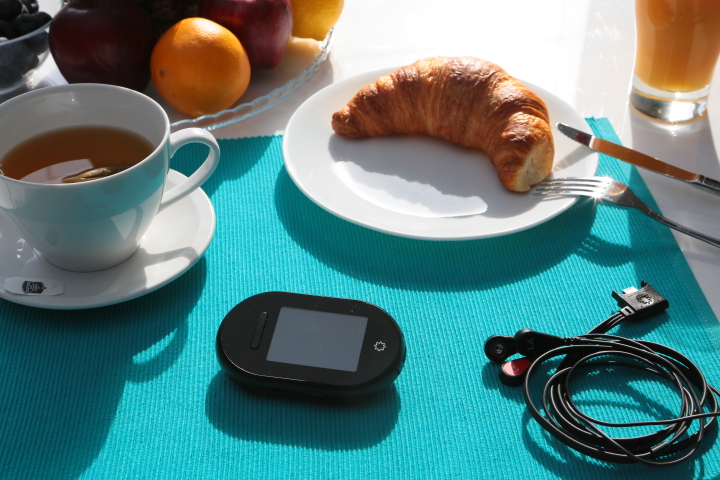

Report: How the Internet of Medical Things (IoMT) is Transforming Medtech
A recent Deloitte report outlines how the Internet of Medical Things (IoMT) is transforming medtech and health care with one small cap stock being a good example of company cashing in on the space.
A recent Deloitte report outlines how the Internet of Medical Things (IoMT) is transforming medtech and health care with one small cap stock being a good example of company cashing in on the space.
Last summer, the Deloitte UK Centre for Health Solutions issued an interesting report (Medtech and the Internet of Medical Things: How connected medical devices are transforming health care) examining how the Internet of Medical Things (IoMT) is transforming medtech’s role in health care. To start with, the Internet of Medical Things concept would be a subset of the Internet of Things (IoT) idea and consists of connected medical devices or applications that feed medical or patient data into the cloud via online networks.
The Deloitte report begins by mentioning that the Internet of Medical Things market is expected to reach $158 billion by 2022, up from $41 billion last year. Medical technology or “medtech” companies already manufacture more than 500,000 different types of medical devices, including wearable external medical devices (e.g. skin patches, insulin pumps and blood glucose monitors), implanted medical devices (e.g. pacemakers and implantable cardioverter defibrillator devices) and stationary medical devices (e.g. home monitoring devices, connected imaging devices and scanning machines).
In April 2018, Deloitte had commissioned market research firm Research2Guidance to conduct a survey of 237 medical device companies with connected medical devices. The survey found that smaller companies surveyed are currently allocating a significantly higher percentage of their R&D budget to the development of connected devices. However, 71% of total respondents felt that hospitals and clinicians are not ready to use the data generated by connected devices and 67% believed it will take another five years for FDA’s regulatory framework for digital devices and medical software to catch up to what is possible today. Other major challenges cited included interoperability, cybersecurity and a growing skills gap.
Nevertheless, the report concluded that connected medical devices will have a profound impact on patients, clinicians and the life sciences industry; but the industry’s future will depend on its ability to demonstrate to providers and payers how connected medical devices can benefit value-based care.
For small cap investors, Biotricity Inc (OTCQB: BTCY) is a good example of an up-and-coming Internet of Medical Things stock that is looking to cash in on the coming transformation of health care. The Company is building a remote patient monitoring platform comprised of three key components tailored to a variety of diagnostic and post-diagnostic applications:
- An IoT hardware with built-in cellular connectivity.
- An embedded Real Time Operating System (RTOS).
- The cloud for analysis and management of both data and devices.
Biotricity’s flagship product is Bioflux – a high-precision, single-unit mobile cardiac telemetry (MCT) device that provides real-time monitoring and transmission of ambulatory patients’ ECG information. Combined with proprietary software, highly customizable reports and 24/7 monitoring center, the Bioflux system offers complete solution for remote cardiac monitoring that merges seamlessly with physicians’ existing platforms and workflows.

Bioflux was first launched with clients in Texas in the beginning of April this year and has since expanded into four additional states with the Company expecting to complete software and hardware prototyping for its Bioflux 2.0 solution and to file a 510(k) clearance application with the US FDA by early 2019.
In August, Biotricity announced the expansion of its sales team to cover two additional geographic centers in the US that are key to driving faster adoption of Bioflux product while in early September, the Company announced that it is developing the “Biopatch” ECG patch to further leverage its capabilities. Biopatch will provide wireless arrhythmia monitoring for patients who are either at risk for, or diagnosed with, certain cardiac issues plus it will offer an alternative to 3-lead systems like Bioflux. While 3-lead systems are still the industry-recommended solution for best diagnostic yield, ECG patches are less cumbersome to wear and easier for patients to use – making them ideal for patients with less complicated cardiac conditions.
Its worth pointing out that continuous ECG monitoring patches worn at home by patients have been found to significantly increase detection of atrial fibrillation (AF) which can lead to serious heart-related complications (including stroke and heart failure). Biopatch will ensure patients with AF and other cardiac issues receive early diagnosis and preemptive care from their physicians.
Biotricity considers remote monitoring medical-grade devices a significant component of its product development roadmap and plans to expand its offerings over time. In addition, the Company has already identified three potential markets where its technology can be applied and plans to announce more details on this initiative over the next three quarters.
Join our community to participate in comments, rate stocks, receive daily updates, and more.
SIMILAR ARTICLES
Small Cap Network
?